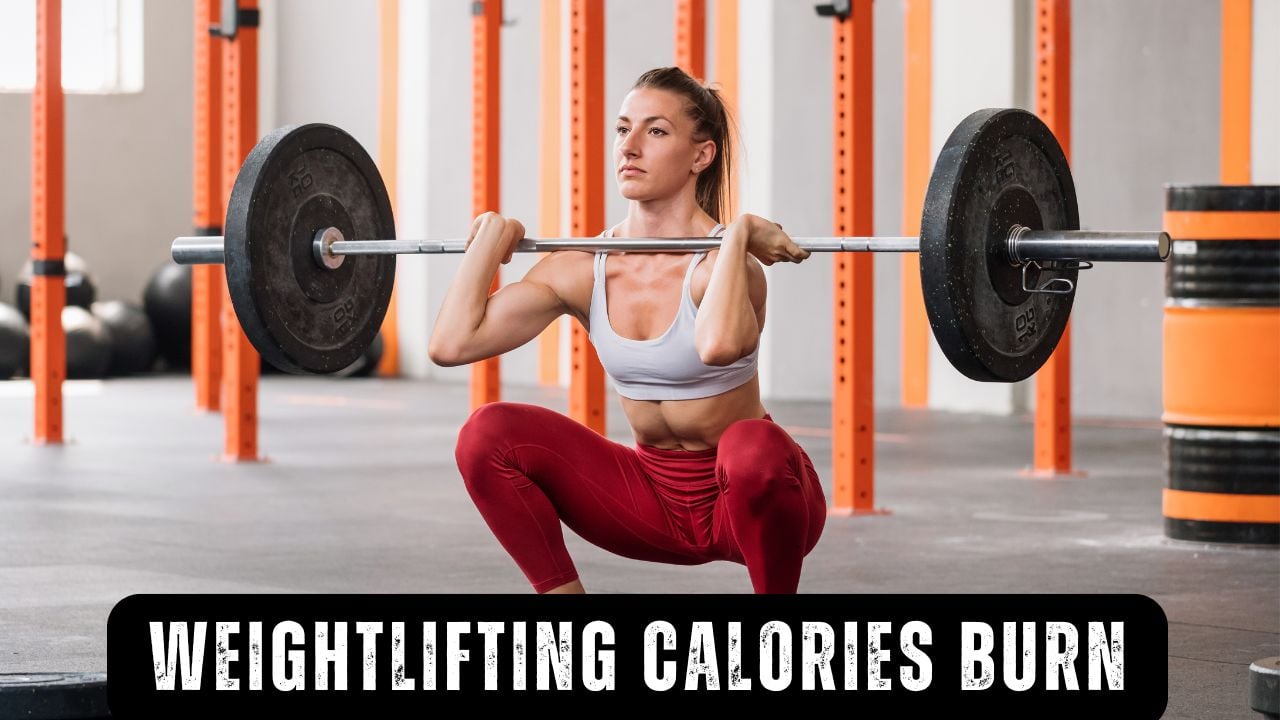🏋️ Weightlifting Calories Burned Calculator
Calculate calories burned during weightlifting and strength training with advanced MET analysis and exercise-specific calculations

How Many Calories Do Weightlifting Workouts Burn?
🏋️ Weightlifting Calorie Burn by Exercise Type
Weightlifting workouts burn between 180-600 calories per hour, depending on the specific exercises, intensity, and training style. For a 150-pound person, light resistance training can burn approximately 180-250 calories per hour, while vigorous strength training sessions can burn 400-600 calories per hour. Compound movements like squats, deadlifts, and bench press burn significantly more calories than isolation exercises, making exercise selection crucial for maximizing energy expenditure during resistance training.
💪 Weightlifting Training Intensity Zones
Weightlifting exercises are classified by training intensity zones based on percentage of one-rep max (%1RM), rest periods, and effort level. Each intensity zone corresponds to specific MET (Metabolic Equivalent of Task) values that determine calorie burn rates. Understanding these zones helps optimize your resistance training for specific goals while maximizing energy expenditure.
Light Intensity Zone
3.0-5.0 METsRest Periods: 60-90 seconds between sets
Rep Range: 12-20 repetitions
Best For: Beginners, rehabilitation, endurance
Benefits: Muscle endurance, technique development, recovery
Moderate Intensity Zone
5.0-7.0 METsRest Periods: 45-75 seconds between sets
Rep Range: 8-12 repetitions
Best For: Hypertrophy, general fitness
Benefits: Muscle growth, strength gains, improved body composition
Vigorous Intensity Zone
7.0-10.0 METsRest Periods: 30-60 seconds between sets
Rep Range: 6-8 repetitions
Best For: Strength training, power development
Benefits: Maximum strength, power, high calorie burn
Very Vigorous Zone
8.0-12.0 METsRest Periods: 15-45 seconds between sets
Rep Range: 1-5 repetitions
Best For: Powerlifting, CrossFit, circuit training
Benefits: Peak strength, explosive power, maximum calorie burn
Understanding MET Values in Weightlifting
MET (Metabolic Equivalent of Task) measures the energy cost of physical activities compared to resting. In weightlifting, MET values vary significantly based on exercise type, load, rest periods, and training style. Compound movements like deadlifts and squats have higher MET values (8.0-10.0) compared to isolation exercises like bicep curls (4.0-5.0). Circuit training and CrossFit-style workouts can reach MET values of 10.0-12.0 due to minimal rest and high intensity.
⚡ Factors Affecting Weightlifting Calorie Burn
Weightlifting Exercise Calorie Burn by Type
| Exercise Type & Category | MET Value | Calories/Hour (130 lb) | Calories/Hour (150 lb) | Calories/Hour (180 lb) | Intensity Classification |
|---|---|---|---|---|---|
| Compound Exercises (Squats, Deadlifts) | 8.0-8.5 | 496-527 cal | 571-607 cal | 648-689 cal | Vigorous |
| Upper Body Compound (Pull-ups, Rows) | 6.5-8.0 | 403-496 cal | 464-571 cal | 527-648 cal | Moderate-Vigorous |
| Bench Press & Pressing Movements | 6.0-6.5 | 372-403 cal | 429-464 cal | 486-527 cal | Moderate |
| Isolation Exercises (Curls, Extensions) | 4.5-5.5 | 279-341 cal | 321-393 cal | 365-446 cal | Light-Moderate |
| Circuit Training & CrossFit | 9.0-12.0 | 558-744 cal | 643-857 cal | 729-972 cal | Very Vigorous |
| Olympic Lifts (Clean, Snatch) | 9.5-10.0 | 589-620 cal | 679-714 cal | 770-810 cal | Very Vigorous |
Note: Calorie values based on scientific MET data from the Compendium of Physical Activities. Values represent moderate to vigorous intensity levels. Actual calorie burn varies based on rest periods, load, and individual factors.
How Many Calories Do Weightlifting Workouts Burn Over Time?
⏱️ Time-Based Weightlifting Calorie Estimates
The duration of weightlifting sessions significantly impacts total calorie expenditure. These estimates are based on moderate intensity resistance training (6.5 METs) with typical rest periods, providing reliable estimates for workout planning and energy balance calculations. For comprehensive fitness tracking, explore our BMR calculator to understand your total daily energy needs including strength training.
| Duration | 130 lb (59 kg) | 150 lb (68 kg) | 175 lb (79 kg) | 200 lb (91 kg) | 225 lb (102 kg) | 250 lb (113 kg) |
|---|---|---|---|---|---|---|
| 30 mins | 201 cal | 232 cal | 264 cal | 296 cal | 331 cal | 366 cal |
| 45 mins | 302 cal | 348 cal | 396 cal | 444 cal | 497 cal | 549 cal |
| 60 mins | 403 cal | 464 cal | 527 cal | 591 cal | 662 cal | 732 cal |
| 75 mins | 504 cal | 580 cal | 659 cal | 739 cal | 828 cal | 915 cal |
| 90 mins | 605 cal | 696 cal | 791 cal | 887 cal | 993 cal | 1098 cal |
Note: Values based on moderate intensity weightlifting (6.5 METs) with standard rest periods. High-intensity circuit training can burn 50-100% more calories, while light isolation work burns 20-30% fewer calories.
Weightlifting Formula & Scientific Methodology
🔬 The Scientific Calculation Method
Primary Formula: Calories = (MET × 3.5 × Weight in kg × Time in minutes) / 200
Enhanced Weightlifting Formula: Calories = (Base MET × Intensity Factor × Focus Factor × Experience Factor × 3.5 × Weight in kg × Time in minutes) / 200
Where:
• Base MET: Exercise-specific metabolic equivalent (3.0-12.0)
• Intensity Factor: 0.8-1.4x based on load and rest periods
• Focus Factor: 0.9-1.3x based on training style (powerlifting to CrossFit)
• Experience Factor: 0.9-1.1x based on training experience
• 3.5: Resting oxygen consumption constant (ml/kg/min)
• Weight: Your body weight in kilograms
• Time: Duration in minutes
• 200: Caloric conversion factor
This enhanced formula provides scientifically accurate estimates with personalized modifiers based on validated research from strength training studies.
Weightlifting Workout FAQs
❓ How accurate is the weightlifting calorie calculator?
Our calculator uses the scientifically validated formula: Calories = (MET × 3.5 × Weight in kg × Time in minutes) / 200, combined with research-based MET values from the Compendium of Physical Activities. This provides accuracy within 10-15% for most individuals, which is comparable to laboratory measurements. The calculations include exercise-specific modifiers and training variables for enhanced precision.
🏋️ Which weightlifting exercises burn the most calories?
Compound exercises like deadlifts (8.5 METs), squats (8.0 METs), and pull-ups (8.0 METs) burn the most calories. Olympic lifts like cleans and snatches (9.5-10.0 METs) provide the highest calorie burn due to their explosive, full-body nature. Circuit training combining multiple exercises can reach 12.0 METs for maximum energy expenditure.
⚖️ How does body weight affect weightlifting calories?
Body weight directly affects weightlifting calorie burn through increased energy requirements for lifting heavier loads and stabilization. The relationship is linear: a 20% increase in body weight typically results in 15-20% more calories burned for the same weightlifting routine, making weight a significant factor in resistance training energy expenditure.
🕒 How long should weightlifting workouts be for optimal calorie burn?
For optimal calorie burn and muscle building, aim for 45-75 minute weightlifting sessions, 3-4 times per week. Shorter, high-intensity sessions (30-45 minutes) can be equally effective with circuit training or minimal rest periods. The key is maintaining intensity and minimizing excessive rest between exercises while allowing adequate recovery.
🌿 Is weightlifting effective for weight loss?
Yes! Weightlifting is highly effective for weight loss through multiple mechanisms: immediate calorie burn during exercise, increased muscle mass that elevates resting metabolic rate, and the afterburn effect (EPOC) that continues burning calories post-workout. Combining strength training with proper nutrition creates sustainable fat loss while preserving lean muscle mass.
📱 How can I maximize calorie burn during weightlifting?
To maximize calorie burn: 1) Focus on compound exercises that work multiple muscle groups, 2) Use moderate to heavy weights (65-85% 1RM), 3) Minimize rest periods between sets (30-90 seconds), 4) Incorporate circuit training or supersets, 5) Include explosive movements like Olympic lifts, 6) Maintain proper form to engage stabilizing muscles. High-intensity weightlifting can burn 400-600+ calories per hour.
⚕️ Weightlifting & Strength Training Safety Disclaimer
This weightlifting calorie calculator provides estimates based on scientific formulas and should not replace professional medical advice or certified trainer guidance. Calorie estimates are most accurate when combined with comprehensive fitness assessments including strength testing, movement screening, and cardiovascular health evaluation. Individual results may vary due to genetic factors, training experience, exercise technique, rest periods, load selection, and environmental factors. The intensity guidelines are based on population studies and may not apply to all individuals. When beginning weightlifting programs, start with proper form instruction and progress gradually to prevent injury. Use appropriate safety equipment, maintain proper technique, and ensure adequate recovery between sessions. Consult with healthcare professionals and certified strength coaches before beginning intensive resistance training programs, especially if you have pre-existing health conditions, injuries, or joint problems. This tool is for educational and informational purposes only and should not be used as the sole basis for exercise or health decisions.
